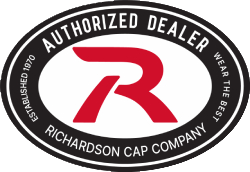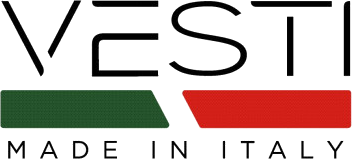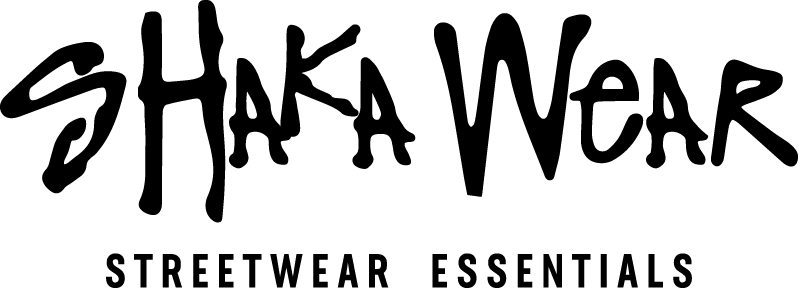Choosing the Perfect T-Shirt Printing Method (The Ultimate Guide)

Posted by AllDayShirts on to Printing Techniques.
Let's be real. In today's fashion landscape, we're all grateful that sporting t-shirts has become not just socially acceptable but downright trendy. Beyond their undeniable comfort, t-shirts offer a dynamic canvas for self-expression and creativity. Moreover, the rise of custom products means that there's never been a better time to translate those unique ideas onto wearable art, giving individuals the chance to showcase their personal flair in a world hungry for originality.
Unfortunately for all of the t-shirt printers and designers out there, there is no perfect way to go about printing your creative designs on them. For example, a printing method may come at an affordable cost but also be limited in terms of what materials it can print on.
In general, the most important things to consider when selecting a t-shirt printing method are cost, color selection, compatible materials, production speed, and the quality of the print. Although no printing method checks all five of these boxes, what really matters is finding the best one for you and your projects.
In our ultimate guide, we're gonna walk you through how each printing method works and break down their respective pros and cons. At the end, we’ll describe what type of person is best suited for each printing method and provide a table ranking them from 1 through 5 in terms of the five factors we listed above.
1. Screen Printing
Screen Printing is the OG of all printing methods, with a history technically spanning over 2,000 years. Its origin can be traced back to ancient China, where hair was placed over a screen to provide a mesh for printing. Although modern Screen Printing did not begin until the late 20th century, it’s still been around for far longer than the other printing methods featured on the list. At one point, it was really the only way to produce t-shirt designs in bulk.
For simplicity’s sake, we won’t get into all of the technicalities of how Screen Printing works. In essence, a design is printed onto a thin mesh or screen to start. The way in which this design is printed on this screen allows for ink to only pass through there. This process must be repeated for each color of the design, which is one of its drawbacks. The prep work for Screen Printing can be very time-consuming for complex and colorful graphics.
Once the screens are prepared, they are separately placed one after the other on a shirt where the ink is pushed through and printed, usually with a squeegee. The shirts are then left to dry, and they are typically heated up to speed up the process.
Where Screen Printing excels the most is for large orders containing one design with a couple of colors or less. For orders like these, prep work for the screens only has to be done once and can be used over and over again for printing on the shirts.
However, for smaller orders or orders with designs that have elaborate color schemes, Screen Printing becomes extremely inefficient and there are many superior alternatives to consider instead.
Starting a small Screen Printing station can be relatively cheap, potentially a thousand dollars or less. However, you’ll be very limited in terms of production speed and color choice since every color requires a separate screen. You may therefore want to invest several thousand dollars to achieve a very efficient Screen Printing station. It will take up a large amount of space and set you back a decent amount for the proper equipment.
Who Should Use Screen Printing?
- Printers primarily dealing with basic designs.
- Printers getting large orders with the same item and design.
Scoring Table
|
Cost: |
2/5 |
Screen Printing is one of the more costly printing methods. Although it’s possible to achieve a small setup for less than a thousand dollars, you would need to spend more to produce at a fast rate. A large investment will be needed for ample space and better equipment. |
|
Color Selection: |
2/5 |
Screen Printing is the most limited printing method in terms of color selection. It’s at least capable of using any color. However, using multiple different colors in a design can be difficult or even impossible to achieve. |
|
Material Capabilities: |
5/5 |
This is one of the best features about Screen Printing. It can be used on pretty much any material found in clothing today. Cotton, Polyester, Rayon, you name it — Screen Printing can print on it. |
|
Production Speed: |
4/5 |
Screen Printing has the fastest production speed of all printing methods under the right conditions. If you’re willing to put up the investment for a larger setup and are receiving large orders of the same design, Screen Printing is head and shoulders above any other method in terms of production speed. |
|
Print Quality: |
4/5 |
There’s a reason why Screen Printing is still around even though more advanced technologies have entered the t-shirt printing world. It produces a super vivid and high-resolution print that has a classic and textured finish on the shirt. The only downside is that the print will start to crack and fade eventually, but it’s still relatively durable. |
2. Dye-Sublimation
Dye-Sublimation, more commonly referred to as just Sublimation, is the new kid on the block in the t-shirt printing world. With recent technological advances in the last decade or two, Sublimation has exponentially grown in popularity.
Sublimation is much different from the other printing methods as the dye actually becomes embedded into the material resulting in a more durable print with an extremely smooth texture. A design is printed on a special sublimation paper that gets heat-pressed onto the shirt. The dye on the paper converts directly from a solid into a gas, then embeds and resolidifies itself into the fabric.
Super vivid and colorful designs can be created with sublimation, making it perfect for more complicated designs. It’s also one of the cheapest printing methods to start up, costing as little as $500 for all necessary equipment. This factor greatly contributes to its popularity, as more people are able to access a heat press and sublimation printer and start printing right now.
Unfortunately, Sublimation is very limited in terms of what materials it can print on. Fabrics must contain at least 65% polyester for a decent print. It also needs to be used on lighter colors such as white if you do not want the design to look faded.
Even then, the future's looking bright for Sublimation. Technological improvements bring designers closer to being able to print on 100% cotton, as well as darker materials. In fact, there are already sprays and chemicals that allow for printing on 100% cotton, though the print quality is not yet the best.
Who Should Use Dye-Sublimation?
- Printers not looking for a huge initial investment to start printing right away.
- Printers who get mostly polyester.
- Printers who want to offer items with more complicated designs.
Scoring Table
|
Cost: |
5/5 |
Along with Heat Transfer Printing, Sublimation is the most affordable printing method featured on this list. You could get started right now with just $500. There’s obviously better equipment at higher prices but it will probably only run up to a little over a thousand, which is still relatively inexpensive. |
|
Color Selection: |
5/5 |
Sublimation is capable of accurately reproducing any design no matter how complicated it is or how many colors are used in it. This is one of the method’s most attractive features. |
|
Material Capabilities: |
1/5 |
This is the main downfall of Sublimation. The material needs to be at least 65% polyester or else the design will fade quickly in the wash. Also, getting vivid designs is really only achievable with lighter colors like white. |
|
Production Speed: |
3/5 |
Sublimation is pretty average in terms of production speed. A little bit of prep work has to be done to the shirt before putting it through the process. Once you get used to it, Sublimation will feel like one of the faster printing methods. If you are dealing with a basic design, however, there are definitely better options. |
|
Print Quality: |
5/5 |
Sublimation produces extremely vivid and high-resolution results. The print is also the most durable of any other type and leaves a nice soft finish. |
3. Direct to Garment (DTG)
Direct to Garment (DTG) is comparable to an actual paper printer ,but for t-shirts instead. For DTG printing, the t-shirt is directly inserted into the DTG printer, where it’s sprayed and soaked with ink to create the design.
DTG has its drawbacks. It was designed for cotton use only, so it does not work well on 100% polyester shirts. Completing a design on just one shirt can take several minutes. DTG printers are also extremely costly, ranging from $5,000 to $500,000!
However, where DTG excels is for smaller orders since there is very little prep work required. DTG is used by companies like Printful, where you can customize just a couple shirts without any penalties. These are the types of businesses DTG is well suited for. Moreover, DTG is capable of producing complex designs with impeccable quality on the surface of the shirt.
Who Should Use Direct to Garment (DTG)?
- Printers who receive a lot of small orders and fill-in orders.
- Screen Printers who can afford a DTG printer to deal with smaller orders and more complex designs.
Scoring Table
|
Cost: |
1/5 |
DTG is probably the most expensive printing method to start up. A DTG printer can cost anything between $5,000 and over $500,000. A useful one will probably be around $15,000. |
|
Color Selection: |
5/5 |
DTG thrives with colorful designs. Any color combination or complicated design can be printed with DTG. DTG is very similar to Sublimation in that regard. |
|
Material Capabilities: |
2/5 |
DTG is very limited in terms of what materials it can print on because it’s designed for 100% cotton. At least it can still print on shirts with a 50% cotton content, though the design will come out a little faded. Do not print on polyester shirts with DTG. |
|
Production Speed: |
3/5 |
DTG has a very slow production speed, taking several minutes to print on a single shirt. The reason why it’s a 3, however, is that it’s actually super fast if you’re just printing a design on one shirt. It requires very little prepwork, which makes it great for small orders. An expensive DTG printer that is tens of thousands of dollars will produce at an extremely fast speed but will obviously require a huge investment. |
|
Print Quality: |
5/5 |
DTG leaves a high-quality print with excellent resolution. The print is also very durable and leaves a nice, smooth finish. |
4. Heat Transfer Printing
Heat Transfer Printing is the under-achieving brother of Sublimation printing. Although it’s not gaining popularity quite as quickly, it still has its uses in the t-shirt printing industry. It all depends on your preferences and what your customers are looking for.
The process of Heat Transfer Printing is similar to Sublimation. After printing the design a special heat transfer paper, said paper is then heat pressed onto the shirt and peeled off. The key differences are the print quality and the compatible materials. Heat Transfer Printing leaves a stiffer design that can be clearly felt on the surface of the shirt. It’s also less durable than Sublimation. However, heat transfer paper is applicable to just about any material. Sublimation and Heat Transfer Printing also cost about the same, requiring only about $500 to start printing right now.
Who Should Use Heat Transfer Printing?
- Printers who are looking for an inexpensive way to print on non-polyester t shirts immediately.
Scoring Table
|
Cost: |
5/5 |
Heat transfer printing is super affordable. You should only really need about $500 bucks to get started. |
|
Color Selection: |
5/5 |
There is no limit to what color combinations you can use for Heat Press Printing. All kinds of complicated designs can be created. |
|
Material Capabilities: |
5/5 |
Heat Transfer Printing can be used on pretty much any material. You may need to adjust the temperature for polyester, but it can still be done fairly easily. |
|
Production Speed: |
3/5 |
The production speed of Heat Transfer Printing is just like Sublimation. It’s pretty average and requires some prep work, but it should start speeding up once you grow accustomed to it. There are definitely much faster options, however, for more basic designs. |
|
Print Quality: |
2/5 |
Heat Transfer Printing does not leave a very good print. Visually, the print looks great and high-res. However, the print can make the shirt stiff and uncomfortable, and the design cracks and fades after many washes. |
5. CAD Cut Vinyl
CAD Cut Vinyl is the most unusual printing method featured on this list. Unlike every other process described here, it doesn’t use any ink. Instead, a design is first created on a special computer program that links to a machine, which cuts the vinyl. Once the vinyl is cut, it is heat-pressed onto the shirt on the desired location.
CAD Cut Vinyl is one of the fastest printing methods and works on pretty much any material. The main issue with it is that the vinyl can be stiff and uncomfortable for the wearer, so designs have to be small. Multicolored designs are also difficult to execute, with CAD Cut Vinyl and other necessary equipment easily costing over a thousand dollars.
Who Should Use CAD Cut Vinyl?
- Printers working with small basic designs like a logo or sports jersey. It’s commonly used for the numbering on a sports jersey.
Scoring Table
|
Cost: |
3/5 |
Buying the necessary equipment for CAD Cut Vinyl can run up over $1,000. Still, it’s not the most expensive printing method on this list. |
|
Color Selection: |
1/5 |
Vinyl is super limited when it comes to combining colors as each piece of vinyl will be one solid color. This is a major downside to CAD Cut Vinyl. |
|
Material Capabilities: |
5/5 |
CAD Cut Vinyl is great for any material. Polyester, Cotton, Rayon, pretty much anything. |
|
Production Speed: |
5/5 |
CAD Cut Vinyl could be the fastest printing method on this list. The CAD cutter works extremely fast, while the cut vinyl itself just takes a quick heat press to be applied to the t-shirt. |
|
Print Quality: |
3/5 |
Vinyl looks really cool on a t-shirt because its texture stands out from the fabric, creating a three-dimensional look. However, the vinyl can crack with too much flexing and feel uncomfortable for the wearer. |
Be Sure to Check Us Out Going Forward...
(Gildan, Bella, and Next Level All at Wholesale Pricing!)
Here at AllDayShirts.com, a large number of our customers are t-shirt printers/designers, as likely you are. For this reason, we are extremely invested in making sure you have sufficient information when making important investments for your business. Hopefully, you found this guide useful in making informed decisions for running your t-shirt business.
Be sure to check out our website for wholesale pricing on t-shirts! We offer products from top brands like Gildan, Bella+Canvas, Next Level, Hanes, and so much more. Lastly, feel free to share your cool designs with @alldayshirts on Facebook and Instagram.
We love seeing your amazing work!
- Christmas Fun Starts with Custom Hoodies & Crewnecks Using DTF Printing
- Thanksgiving DTF Apparel: Create Cozy, Colorful, and Custom Looks This Holiday Season
- Halloween DTF Apparel: Create Spooky Custom Looks with Jerzees 562 and 996 from AllDayShirts.com
- The Ultimate Guide to Soft Style Gildan Fleece: Comfort, Style, and Value for Every Wardrobe
- Why Acrylic Beanies Are a Unique Challenge
- Jerzees Fleece: The Perfect Blend of Comfort, Style, and Value
- Back-to-School DTF Printing: The Ultimate Guide to Custom Apparel for Students and Schools
- Image Enhancer for DTF Printing: How to Unlock Sharper, Brighter, and More Professional Prints
- How to Apply UV DTF: The Complete Step-by-Step Guide
- Introducing Print-on-Demand Hats: Featuring the Richardson 112, Otto 5-Panel Mid Profile Cap & High Crown Mesh Back Trucker



























